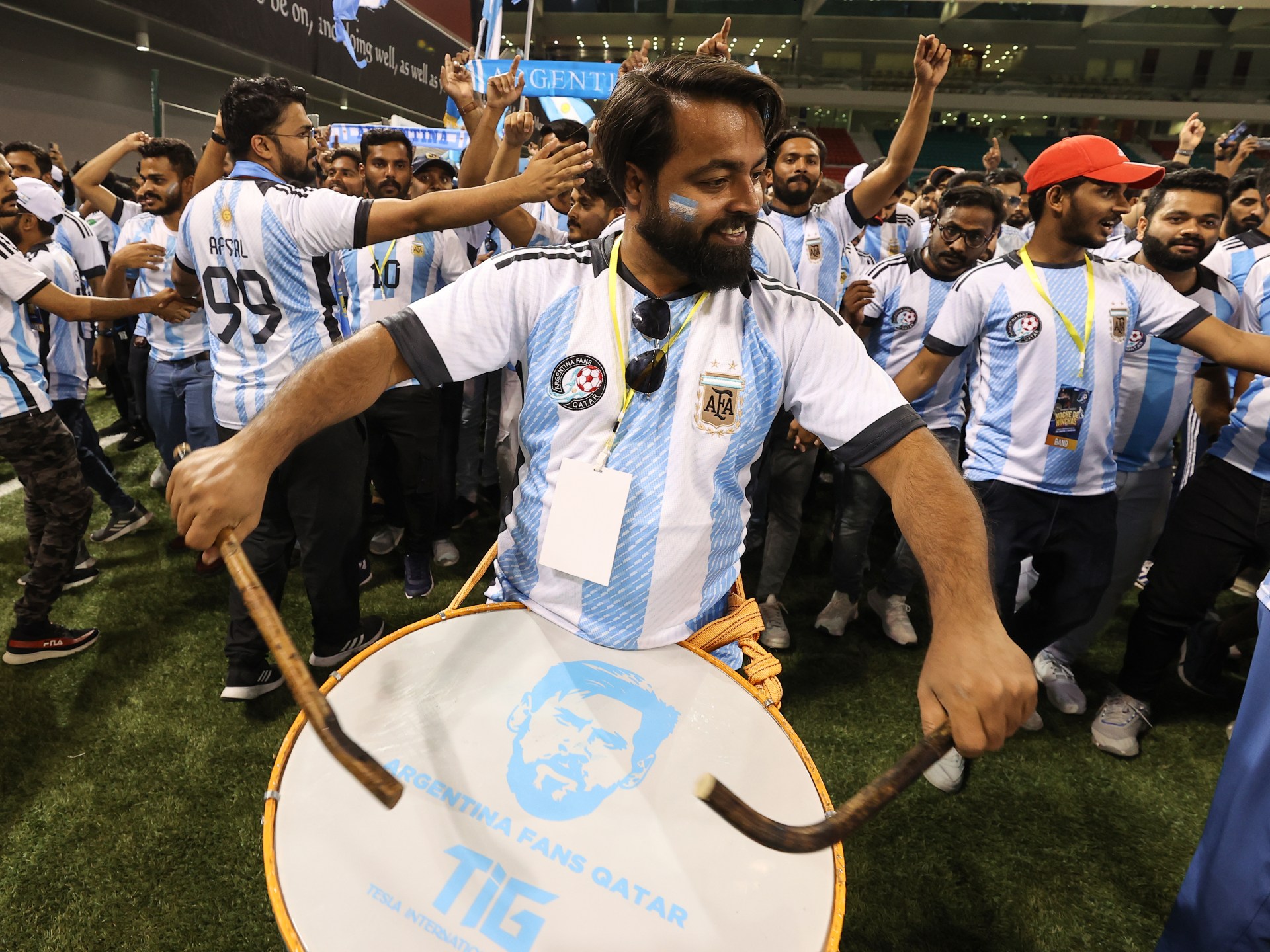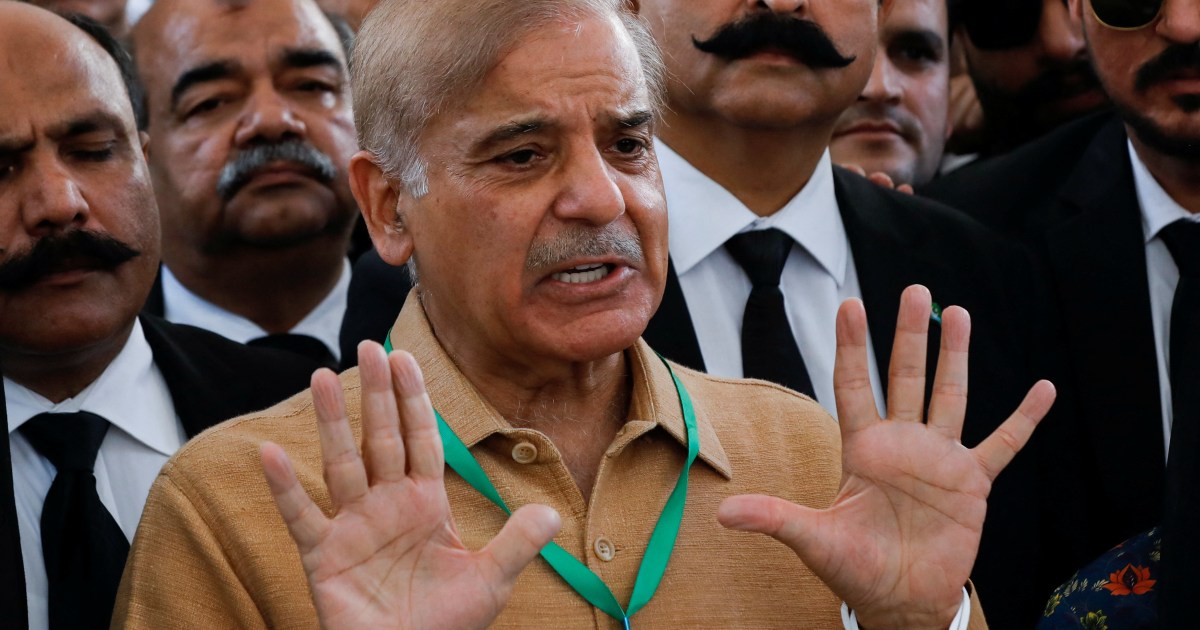Why Indians love World Cup football, even without India in it | Qatar World Cup 2022 News
It is a routine that plays out every four years. Indian football fans get louder and more rambunctious as the World Cup draws nearer, even though India is not part of the tournament.
During every World Cup, huge posters of football icons like Argentina’s Lionel Messi, and Brazil’s Neymar, sometimes even adorned with garlands, can be found along roads in the subcontinent’s football-crazy states and regions like Kerala, West Bengal, Goa and the country’s northeast, where fans are for the most part fiercely loyal to Brazil and Argentina.
Flags from countries participating in the World Cup, football-themed menus in eateries, and shops selling World Cup souvenirs are also common in these places during football’s biggest event.
“We may not have shown our merit in football yet, but if there was a World Cup for ‘Fanball’ we would be in the running…,” Indian business tycoon Anand Mahindra said in a tweet after fans in Kerala, clad in football jerseys of their favourite players, celebrated Argentina’s birth into World Cup final by leading a parade through the streets.
Fans of Argentina are celebrating. (Brazilian fans in the crowd too,but obviously they’re not too happy) The interesting thing is that these fans are in India. We may not have shown our merit in Football yet, but if there was a World Cup for ‘Fanball’ we would be in the running… pic.twitter.com/XjVhBHqgpw
— anand mahindra (@anandmahindra) December 14, 2022
Elsewhere in India, such as in Bengaluru, Mumbai, Chennai and New Delhi, cafés and bars have also opened their doors to football fans, with some of them showing matches into the night.
For Saihlupuii Sailo, a teacher based in Aizawl, the capital of the northeast Indian state of Mizoram, watching the World Cup was also a family affair.
“Football is a sport that my entire family loves. I grew up watching football and the first World Cup I watched was in 1990. I don’t really remember much about the game but I remember my parents adjusting the television antenna for us to get better signal,” Sailo, who watched the semifinals along with her brother Sailo Vanlalthlana Jr and her nephew Lalchhanhima, told Al Jazeera.
“It brings back a lot of memories,” she said. And a predicament. Her family supported Argentina, while she liked the French side more. But before Sunday’s final between those two teams, she might switch her loyalties for once. “I want Messi to win, I feel no one deserves it more than him.”
While Sailo and her family have watched matches on television, thousands of Indian fans have travelled to Qatar to watch the World Cup live. According to FIFA, Indian fans made up the second-largest number of people watching the games in Qatar during the group stage, after Saudi Arabia.
Among them was Chelston Pinto, a professional football player from Bengaluru and the co-founder of Rapid Sport Fitness, a gym for elite athletes. He thought the beauty and simplicity of playing football made it a game people in India love watching.
“Watching the games in Qatar was definitely an experience of a lifetime,” he said. “Each fan base brings in something different, and I think the whole fan environment created in Qatar was a brilliant experience. It’s something that I would recommend to every Indian fan.”
A missed chance to play at the World Cup
Recently, India has struggled to come even close to qualifying for the FIFA World Cup. But back in 1950, the country had what has since been described as a golden generation of players. At the 1948 London Olympics, India had fought hard against a fancied French team before losing 2-1.
In advance of the 1950 World Cup in Brazil, India was placed in a qualifying group with the Philippines and Burma (now Myanmar). But both those other sides withdrew from the competition at a time when the tournament was still in its infancy, Asian countries were comparatively poorer, and the prospect of a trip across the world to South America was expensive. As a result, India qualified for the World Cup by default.
But India, too, decided against sending a team to Brazil. The country’s football federation has never explained the decision and theories are plentiful: Some have said it is because the team wanted to play barefoot, while others claimed the All India Football Federation (AIFF) could not afford to send the players to Brazil at the time.
Whatever the reason, it was an opportunity missed — one that India has never had since. India next participated in the World Cup qualifiers only in 1986.
The Indian team still has a long way to go in order to qualify for the World Cup, Pinto said.
“I think we first need to start from the grassroots and hold a lot more tournaments within India. Professional footballers are only playing for about four to six months, which is definitely not enough,” he said. Instead, they need access to top-notch training facilities and tough competition for at least 10 months of the year, he said.
The country also needs a footballing calendar from the grassroots level, Pinto said, with a focus on training young players with talent from the under-12 age group. “Those are the players who would get India into the World Cup in the future,” he said.
The AIFF has a new leadership that took over in September. The Indian Super League – India’s top professional football league starting the 2022-23 season – has had increasing television viewership and fan support since its launch in 2013. Pinto hopes these changes will pave the way for India to qualify for the World Cup in the future.
Fan frenzy continues
Still, even without India’s participation in the World Cup, support for the sport in the country remains high: Top European clubs count India as an increasing market of fans.
This passion for global football first soared when Brazil’s Pelé and Argentina’s Diego Maradona reigned on the pitch, said fans. “My dad has been supporting these countries for many years because of these players who were like India’s football gods back then,” Mumbai-based Praman Narain, founder of a travel lodging startup called Roamhome, told Al Jazeera. “>He loved watching them play and I think these individual players might be one of the reasons Indians love watching the game.”
Today, Portugal’s Cristiano Ronaldo and Argentina’s Messi receive similar love. “Maybe in the future, if India qualifies, an Indian player might get such treatment,” Narain said.
Adhip Chopra, a Mumbai-based freelance filmmaker working with Indian production company Yash Raj Films, drew parallels between the football on display at the Qatar World Cup, where unfancied teams have upset multiple top contenders, and the Bollywood scripts that Indians love.
“It’s been an entertaining World Cup for sure,” Chopra told Al Jazeera. “I would have scripted games where Japan, Spain and Germany played in the group stages. The thrill of the games had all the melodrama, action and entertainment which Indians enjoy in Bollywood movies.” Japan defeated Germany and Spain, both former champions, in the group stage of the World Cup.
Asian connection
For many Indian fans, the rise of Asian teams, such as Japan and South Korea, and African teams, such as Morocco, have also been a welcome surprise.
Aiman Fayaz, 20, pursuing her Bachelor’s degree in English literature and based in Srinagar, in Indian-administered Kashmir, has typically been a Portugal supporter. But Morocco’s performance this year has meant a lot to Kashmiris, she said.
“They are not only playing for Africa. They are playing for every Muslim nation, you know,” she said. “They have been supporting Palestine in their cheer slogans and it feels amazing to know that teams like Morocco are supporting places which are in conflict. Being a Kashmiri, it really feels nice to see this.”
Football is popular among girls in Kashmir, she said. “There is a lot of fighting going on in our region, but with how Morocco played and how they’re supporting Palestine, there is hope for us in Kashmir,” she said. “I also hope that if India ever makes it into the World Cup, we have Kashmiri players in the team.”
Anshuk Megharikh, a corporate lawyer based in Bengaluru, said Morocco’s underdog status was also a key reason why the country’s team was finding support in India. “Everyone loves to see an underdog play well,” he told Al Jazeera. “A majority of the people in India, no matter who they claim to support, are also neutral fans. So for a neutral fan like myself, to be able to see the amazing games that Morocco have played, is inspiring.”
“That’s the kind of story that comes around once every four years. And that’s the story that really overshadows everything else about this tournament,” he added




